|| 🇵🇸 Free Palestine 🇵🇸 || Xe/Xem Pronouns || Studyblr & Langblr || Feel free to let me know if I forgot to add alt text! || Main blog: @arr0w-ace ||
Don't wanna be here? Send us removal request.
Text
spanish resource lists for learners
a list of lists!! levels are estimated.
refold has a crowdsourced resource list for spanish, curated & with notes | A1 to C2
dreamingspanish on reddit has a crowdsourced spreadsheet with over 90 channels geared towards learners | A1 to C2
learn natively has a huge deck of spanish books sorted by difficulty by learners | A1 to C2
prensa escrita has a list of news websites sorted by country & sometimes city | B1 to C1 probably
the CI wiki has an editable list of CI resources and a couple of native content links | A1 to like B2?
comprehensible hub has tons of spanish podcasts for learners | A1 to B2
letterboxd has a ton of very fun #español lists, e.g. movies mentioned in the wild project podcast, latin american female directors, made in puerto rico | ~B2 to C2
there are also a ton of moocs in spanish for intermediate to advanced learners (moocs are online courses, usually free) | B1 to C2
2K notes
·
View notes
Text
I've been trying to incorporate learning Spanish into my morning routine, so I thought I'd share some video and book resources I've found.
A YouTuber called My Daily Spanish. They're from Spain and speak slowly. Spanish subtitles are added into the video, and they add English subtitles into the closed captioning.
A podcast on Spotify called Leyendas Legendarias. The people behind this talk about true crime, paranormal events, and historical events.
Bloom Library has many online books in Spanish and several other languages.
Tan Tan is another YouTuber who makes GRWM videos and vlogs. Ii could see this being helpful for casual conversations.
5 notes
·
View notes
Text
If you aren't following the news here in the Pacific Northwest, this is a very, very big deal. Our native salmon numbers have been plummeting over the past century and change. First it was due to overfishing by commercial canneries, then the dams went in and slowed the rivers down and blocked the salmons' migratory paths. More recently climate change is warming the water even more than the slower river flows have, and salmon can easily die of overheating in temperatures we would consider comfortable.
Removing the dams will allow the Klamath River and its tributaries to return to their natural states, making them more hospitable to salmon and other native wildlife (the reservoirs created by the dams were full of non-native fish stocked there over the years.) Not only will this help the salmon thrive, but it makes the entire ecosystem in the region more resilient. The nutrients that salmon bring back from their years in the ocean, stored within their flesh and bones, works its way through the surrounding forest and can be traced in plants several miles from the river.
This is also a victory for the Yurok, Karuk, and other indigenous people who have relied on the Klamath for many generations. The salmon aren't just a crucial source of food, but also deeply ingrained in indigenous cultures. It's a small step toward righting one of the many wrongs that indigenous people in the Americas have suffered for centuries.
19K notes
·
View notes
Text
When I was in vet school I went to this one lecture that I will never forget. Various clubs would have different guest lecturers come in to talk about relevant topics and since I was in the Wildlife Disease Association club I naturally attended all the wildlife and conservation discussions. Well on this particular occasion, the speakers started off telling us they had been working on a project involving the conservation of lemurs in Madagascar. Lemurs exist only in Madagascar, and they are in real trouble; they’re considered the most endangered group of mammals on Earth. This team of veterinarians was initially assembled to address threats to lemur health and work on conservation solutions to try and save as many lemur species from extinction as possible. As they explored the most present dangers to lemurs they found that although habitat loss was the primary problem for these vulnerable animals, predation by humans was a significant cause of losses as well. The vets realized it was crucial for the hunting of lemurs by native people to stop, but of course this is not so simple a problem.
The local Malagasy people are dealing with extreme poverty and food insecurity, with nearly half of children under five years old suffering from chronic malnutrition. The local people have always subsisted on hunting wildlife for food, and as Madagascar’s wildlife population declines, the people who rely on so-called bushmeat to survive are struggling more and more. People are literally starving.
Our conservation team thought about this a lot. They had initially intended to focus efforts on education but came to understand that this is not an issue arising from a lack of knowledge. For these people it is a question of survival. It doesn’t matter how many times a foreigner tells you not to eat an animal you’ve hunted your entire life, if your child is starving you are going to do everything in your power to keep your family alive.
So the vets changed course. Rather than focus efforts on simply teaching people about lemurs, they decided to try and use veterinary medicine to reduce the underlying issue of food insecurity. They supposed that if a reliable protein source could be introduced for the people who needed it, the dependence on meat from wildlife would greatly decrease. So they got to work establishing new flocks of chickens in the most at-risk communities, and also initiated an aggressive vaccination program for Newcastle disease (an infectious illness of poultry that is of particular concern in this area). They worked with over 600 households to ensure appropriate husbandry and vaccination for every flock, and soon found these communities were being transformed by the introduction of a steady protein source. Families with a healthy flock of chickens were far less likely to hunt wild animals like lemurs, and fewer kids went hungry. Thats what we call a win-win situation.
This chicken vaccine program became just one small part of an amazing conservation outreach initiative in Madagascar that puts local people at the center of everything they do. Helping these vulnerable communities of people helps similarly vulnerable wildlife, always. If we go into a country guns-blazing with that fire for conservation in our hearts and a plan to save native animals, we simply cannot ignore the humans who live around them. Doing so is counterintuitive to creating an effective plan because whether we recognize it or not, humans and animals are inextricably linked in many ways. A true conservation success story is one that doesn’t leave needy humans in its wake, and that is why I think this particular story has stuck with me for so long.
(Source 1)
(Source 2- cool video exploring this initiative from some folks involved)
(Source 3)
35K notes
·
View notes
Text
Golf Courses ARE Being Converted
The Solarpunk "fantasy" that so many of us tout as a dream vision, converting golf courses into ecological wonderlands, is being implemented across the USA according to this NYT article!
The article covers courses in Michigan, Pennsylvania, California, Colorado, and New York that are being bought and turned into habitat and hiking trails.

The article goes more into detail about how sand traps are being turned into sand boxes for kids, endangered local species are being planted, rocks for owl habitat are being installed, and that as these courses become wilder, they are creating more areas for biodiversity to thrive.
Most of the courses in transition are being bought by Local Land Trusts. Apparently the supply of golf courses in the USA is way over the demand, and many have been shut down since the early 2000s. While many are bought up and paved over, land Trusts have been able to buy several and turn them into what the communities want: public areas for people and wildlife. It does make a point to say that not every hold course location lends itself well to habitat for animals (but that doesn't mean it wouldn't make great housing!)
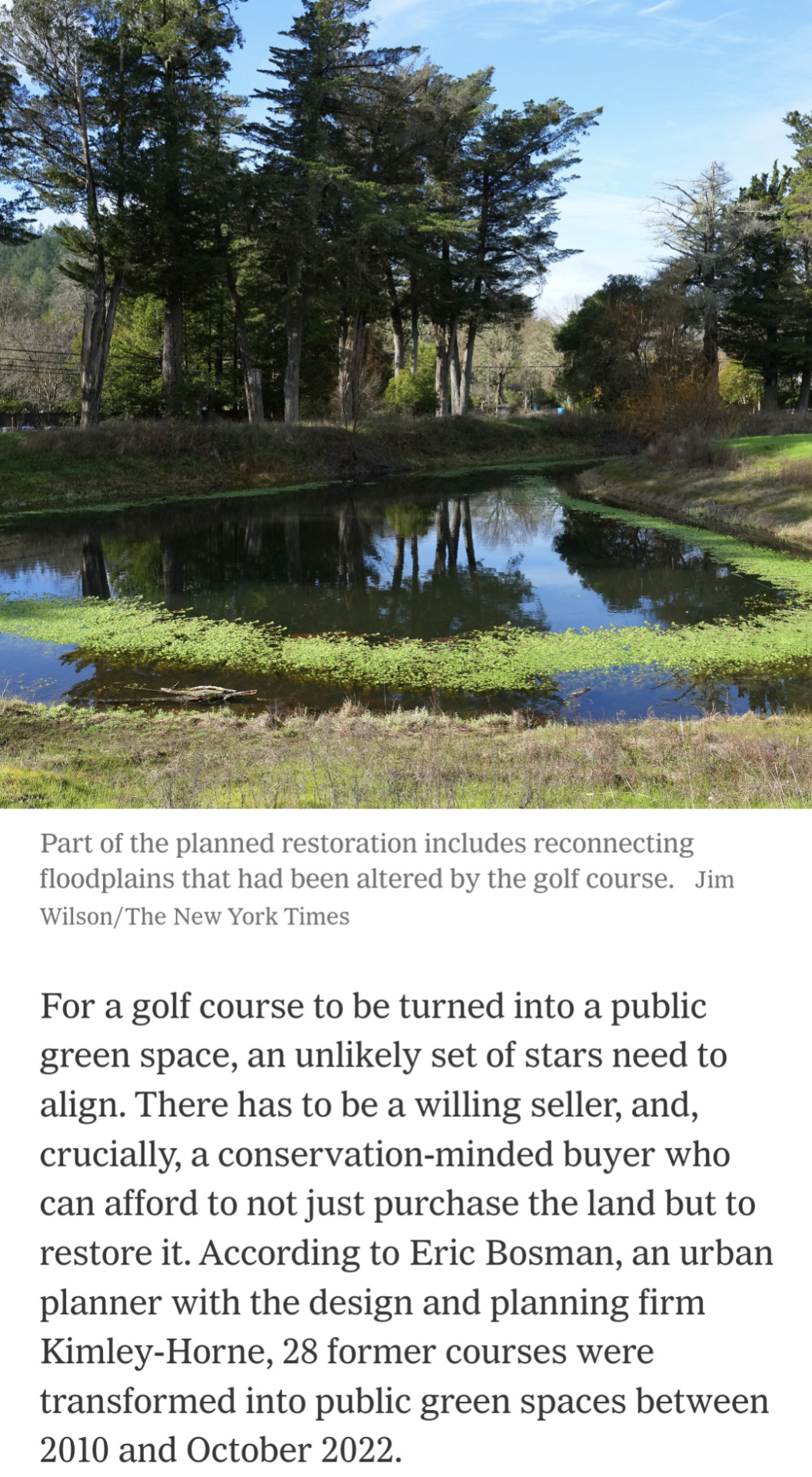
So lets be excited by the fact that people we don't even know about are working on the solutions we love to see! Turning a private space that needs thousands of gallons of water and fertilizer into an ecologically oriented public space is the future I want to see! I can say when I used to work in water conservation, we were getting a lot of clients that were golf courses that were interested in cutting their resource input, and they ended up planting a lot of natives! So even the golf courses that still operate could be making an effort.
So what I'd encourage you to do is see if there's any land or community trusts in your area, and see if you can get involved! Maybe even look into how to start one in your community! Through land trusts it's not always golf course conversions, but community gardens, solar fields, disaster adaptation, or low cost housing! (Here's a link to the first locator I found, but that doesn't mean if something isn't on here it doesn't exist in your area, do some digging!)
20K notes
·
View notes
Text
"Despite being arguably the most famous island chain in the world in terms of biodiversity, the Galápagos Islands are still surprising scientists today.
A bird seen and recorded by Charles Darwin on his visit to Floreana island in 1835 has been observed in the wild there for the first time in 190 years.
Darwin’s observations from the small, south-central island in the volcanic chain included the presence of a small, secretive bird called the Galápagos rail (Laterallus spilonota).
Just two years ago, several organizations began work on the large-scale Floreana Island Restoration Project. By removing invasive species that devastated native wildlife for generations, the local environment once again became a haven for species to recover and thrive.
The Galápagos rail, a land-bird endemic to the archipelago, has been severely impacted by these invasive species. It dwells on the ground, is extremely vulnerable to predators, and relies on dense, lush vegetation to hide in. But despite these dangers, the rail has proved to be a resilient and resourceful little bird.
The rails, locally known as Pachays, have been quick to return to restored islands. In 2018, six years after the conservation nonprofit Island Conservation successfully removed invasive species from nearby Pinzón Island, the Rails were among the first locally-extinct animals to reappear—along with other species such as the cactus finch.
It hasn’t been long since the Floreana Island Restoration Project began, but the rails have already repopulated it.
During their most recent annual landbird monitoring expedition on the island, teams from the Charles Darwin Foundation and Ecuador’s state agency for managing the archipelago recorded the bird’s presence at three distinct sites.
The birds were present and away from human habitation and agriculture, in a grassland shaded by guava trees. Confirmed findings include six acoustic records, two visual sightings, and one photograph. And it isn’t a coincidence that they’re back now—the site has been monitored for the Galápagos rail consistently since 2015, and this is the first year they’re back.
“The rediscovery of the Galápagos rail confirms what we’ve seen on islands worldwide—remove the invasive threats, and native species can recover in remarkable ways,” said Island Conservation’s Conservation Impact Program Manager Paula Castaño in a statement.
“This is an incredible win for Floreana, and fuels our excitement about what other native species might resurface as the island continues its journey toward ecological recovery.”
Next, scientists must use genetic sampling to determine whether these newly recorded birds are from a self-reintroduced lineage or whether there was a tiny population of rails that survived, undetected, for 190 years.
Island Conservation details how that’s not unheard of: on nearby Rábida, the organization’s restoration efforts led to the rediscovery of a species of gecko that was only known to science through subfossil records dated more than 5000 years old. They’d been living on the island in very low numbers for hundreds of years, but it was only once holistic restoration had taken place that they were able to increase their numbers to detectable levels.
MORE NEWS FROM THIS FAMOUS PLACE: 500 Giant Tortoises Reintroduced to Four Galapagos Islands in 2023
With a local population already establishing itself, chances are good for a successful reintroduction. Soon, it’s hoped, Floreana’s grasslands will be home to a large, thriving colony of rails.
“It gives us hope that there might be even more ‘extinct’ Galápagos species to find,” the statement read.""
-via Good News Network, March 3, 2025
685 notes
·
View notes
Text
"In a degraded and semi-arid farming area in India, simple science-driven changes to the landscape have colored the horizon, and a village’s fortunes, with green.
In the Latur district in the central western state of Maharashtra, 40 years of erratic rainfall, groundwater depletion, soil erosion, and crop failures have impoverished the local people.
In the village of Matephal, the International Crops Research Institute for the Semi-Arid Tropics (ICRISAT) launched a project in 2023 that aimed at addressing these challenges through integrated landscape management and climate-smart farming practices. [Note: Meaning they've achieved this much in just two years!]
Multiple forms of data collection allowed ICRISAT to target precise strategies for each challenge facing the 2,000 or so people in Matephal.

Key interventions focused on three critical areas: water conservation, land enhancement with crop diversification, and soil health improvement. Rainwater harvesting structures recharged groundwater around 1,200 acres, raising water tables by 12 feet and securing reliable irrigation. Farm ponds provided supplemental irrigation, while embanking across 320 acres reduced soil erosion.
Farmers diversified their crops, converting 120 or so acres of previously fallow land into productive farmland with legumes, millets, and vegetables. Horticulture-linked markets for fruits and flowers improved income stability.
Weather monitoring equipment was also installed that actively informed sustainable irrigation practices.
“It is a prime example of how data-driven approaches can address complex agricultural challenges, ensuring interventions are precise and impactful. Matephal village is a model for other semi-arid regions in India and beyond,” said Dr. Stanford Blade, Director General-Interim at ICRISAT.
Farmers actively participated in planning and decision-making, fostering long-term commitment.
“This ICRISAT project improved yields, diversified crops, and boosted incomes. It also spared women from walking over a kilometer for drinking water, now available in the village for people and animals,” said Mr. Govind Hinge of Matephal village.
Looking ahead, ICRISAT writes it wants to use Matephal as a case study to scale these methods across India’s vast and drier average. As Matephal’s fields flourish, the village is a testament to the power of collaboration and science in transforming lives and landscapes."
youtube
-Article via Good News Network, March 3, 2025. Video via International Crops Research Institute for the Semi-Arid Tropics (ICRISAT), February 26, 2025
725 notes
·
View notes
Text
Skip Google for Research
As Google has worked to overtake the internet, its search algorithm has not just gotten worse. It has been designed to prioritize advertisers and popular pages often times excluding pages and content that better matches your search terms
As a writer in need of information for my stories, I find this unacceptable. As a proponent of availability of information so the populace can actually educate itself, it is unforgivable.
Below is a concise list of useful research sites compiled by Edward Clark over on Facebook. I was familiar with some, but not all of these.
⁂
Google is so powerful that it “hides” other search systems from us. We just don’t know the existence of most of them. Meanwhile, there are still a huge number of excellent searchers in the world who specialize in books, science, other smart information. Keep a list of sites you never heard of.
www.refseek.com - Academic Resource Search. More than a billion sources: encyclopedia, monographies, magazines.
www.worldcat.org - a search for the contents of 20 thousand worldwide libraries. Find out where lies the nearest rare book you need.
https://link.springer.com - access to more than 10 million scientific documents: books, articles, research protocols.
www.bioline.org.br is a library of scientific bioscience journals published in developing countries.
http://repec.org - volunteers from 102 countries have collected almost 4 million publications on economics and related science.
www.science.gov is an American state search engine on 2200+ scientific sites. More than 200 million articles are indexed.
www.pdfdrive.com is the largest website for free download of books in PDF format. Claiming over 225 million names.
www.base-search.net is one of the most powerful researches on academic studies texts. More than 100 million scientific documents, 70% of them are free
300K notes
·
View notes
Text
Yay, unsolicited advice time! Or, not really advice, more like miscellaneous tips and tricks, because if there's one thing eight years of martial arts has equipped me to write, it's fight scenes.
.
Fun things to add to a fight scene (hand to hand edition)
It's not uncommon for two people to kick at the same time and smack their shins together, or for one person to block a kick with their shin. This is called a shin lock and it HURTS like a BITCH. You can be limping for the rest of the fight if you do it hard enough.
If your character is mean and short, they can block kicks with the tip of their elbow, which hurts the other guy a lot more and them a lot less
Headbutts are a quick way to give yourself a concussion
If a character has had many concussions, they will be easier to knock out. This is called glass jaw.
Bad places to get hit that aren't the groin: solar plexus, liver, back of the head, side of the thigh (a lot of leg kicks aim for this because if it connects, your opponent will be limping)
Give your character a fighting style. It helps establish their personality and physicality. Are they a grappler? Do they prefer kicks or fighting up close? How well trained are they?
Your scalp bleeds a lot and this can get in your eyes, blinding you
If you get hit in the nose, your eyes water
Adrenaline's a hell of a drug. Most of the time, you're not going to know how badly you've been hurt until after the fact
Even with good technique, it's really easy to break toes and fingers
Blocking hurts, dodging doesn't
.
Just thought these might be useful! If you want a more comprehensive guide or a weapons edition, feel free to ask. If you want, write how your characters fight in the comments!
Have a bitchin day <3
19K notes
·
View notes
Text
On twitter I’m seeing dozens of threads from Black activists warning people against burnout, giving all sorts of useful tips about preventing and managing it for the sake of a long-term, sustainable effort.
On tumblr I’m seeing a hell of a lot of young white kids yelling at anyone who actually follows those steps, and acting like burnout is a moral falling rather than a well-proven psychological phenomenon.
Be careful who you get your information from. Don’t let guilt lead you to make choices that will harm both you and the movement.
#i dont if i already reblogged this#much less on whether it was to this blog or my main one#but its still important#reblog#self care#burnout
143K notes
·
View notes
Text

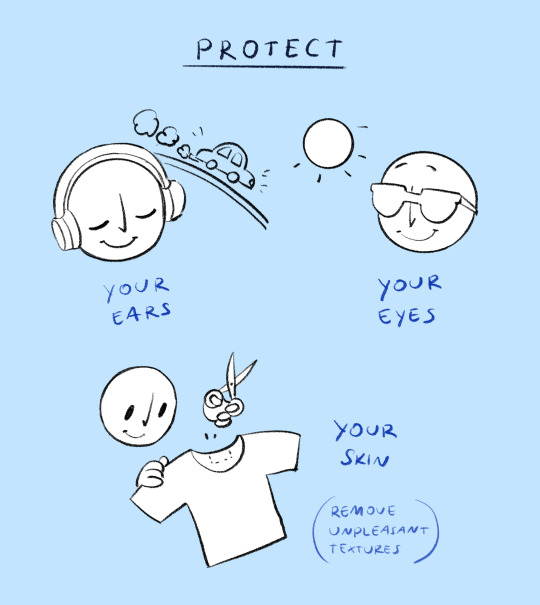
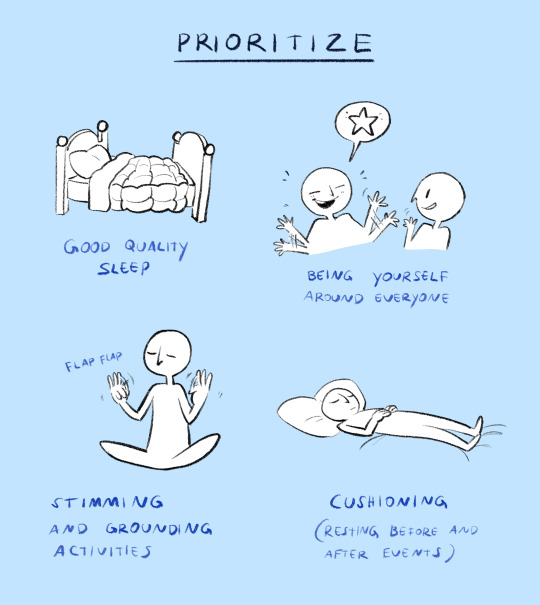



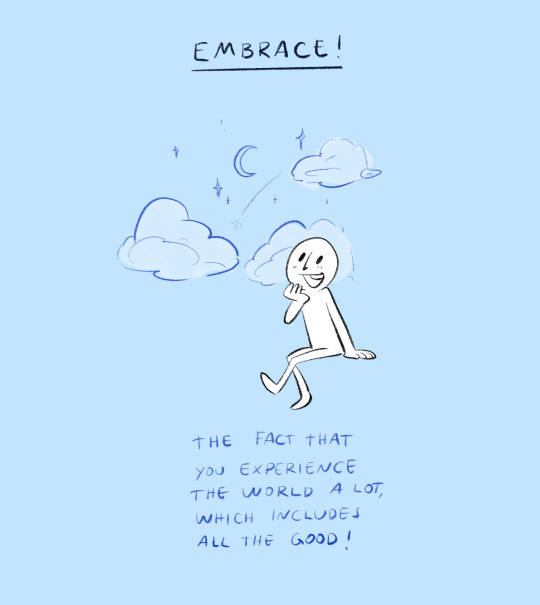
I made this a long time ago but for some reason never posted! It is my quick guide to protecting yourself against burnout as a person with ADHD and ASD.
Of course it is all about meeting your support needs at the end of the day, which are completely individual and may vary over time, but this could function as a guide if you have a hard time figuring out where to start! 🫶🏻 💙💙💙
37K notes
·
View notes
Text
i know we're all sick of self-care being a marketing tactic now, but i don't think a lot of us have any other concept of self-care beyond what companies have tried to sell us, so i thought i'd share my favorite self-care hand out
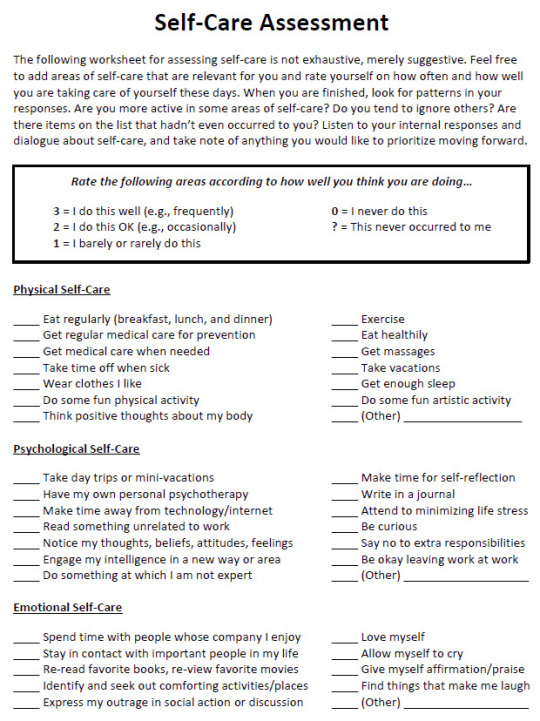
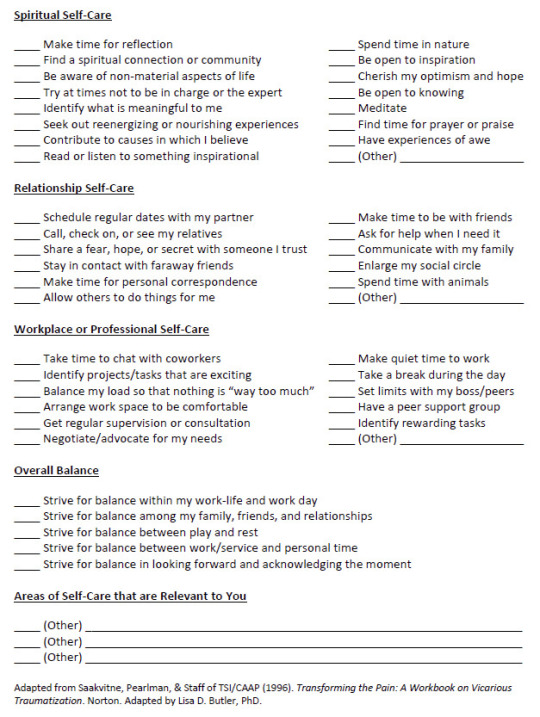
brought to you by how mad i just got at a Target ad
176K notes
·
View notes
Text



Day 2 of Finals Week is over! I didn't have any tests today, so I took the opportunity to go to a coffee shop and force myself to finish editing my research proposal for a geology class. I definitely should've split that between today and yesterday like originally planned–it took me 3 hours and 15 minutes to edit all 15 or so pages of the literature review chapter! Curse my procrastination! But at least I did another shorter (but still long) assignment for my microbiology lecture yesterday in its place.
#i had a final test for my microbio lab yesterday#and a test for my geology lab the week before that#(it meets on Wednesday so we didn’t meet last week)#and i had a test yesterday for the matching lecture#so only 2 tests left!#studyblr#the ambitious academic
1 note
·
View note
Text








𝔴𝔢’𝔯𝔢 𝔱𝔥𝔢 𝔬𝔫𝔩𝔶 𝔱𝔴𝔬 𝔰𝔱𝔲𝔡𝔢𝔫𝔱𝔰 𝔰𝔱𝔲𝔡𝔶𝔦𝔫𝔤 𝔩𝔞𝔱𝔢 𝔞𝔱 𝔱𝔥𝔢 𝔩𝔦𝔟𝔯𝔞𝔯𝔶. 𝔴𝔬𝔲𝔩𝔡 𝔶𝔬𝔲 𝔩𝔦𝔨𝔢 𝔱𝔬 𝔰𝔱𝔲𝔡𝔶 𝔱𝔬𝔤𝔢𝔱𝔥𝔢𝔯?
3K notes
·
View notes
Text
more words for characterization (pt. 2)
Attributes of behavior: [A-D] abstemious, accident-prone, acid, acrimonious, adamant, affable, affectionate, agreeable, aimless, aloof, amuck, animated, anxious, arbitrary, ardent, arrogant, ascetic, attentive, austere, avid, backhanded, bad, barbarian, barbarous, beaming, belligerent, big, blindly, boisterous, bossy, brassy, brazen, brusque, cagey, calm, capricious, casual, cavalier, cheeky, chill, chummy, clumsy, cocky/cocksure, combative, comic/comical, compassionate, complaisant, compulsive, conciliatory, considerate, contemptuous, contrary, convivial, cordial, corrupt, courageous, courtly, cowardly, crabby/crabbed, cranky, craven, crotchety, cruel, cunning, daring, dauntless, debonair, decent, decided, defensive, defiant, deliberately, delightful, delirious, demure, detached, diffident, disagreeable, disarming, discreet, disgruntled, disinterested, disobedient, disorderly, disputatious, disruptive, dissolute, distraught, divisive, doctrinaire, dolorous, doting, double-dealing, draconian
[E-J] eager, easy, edgy, effervescent, emotionless, envious, equable, evasive, even-tempered, excitable, exuberant, faithful, fake, false, fanatical, favorably, fearful, feigned, ferocious, fervent/fervid, fickle, fiery, finicky, flamboyant, flighty, flirtatious, foolhardy, foolishly, forceful, forward, fractious, freely, fretful, frivolous, fussy, gamely, genteel, glacial, gluttonous, goody-goody, graceless, grandiose, gritty, gruff, gung ho, halfhearted, hardhearted, haram-scarum, headstrong, hearty, helpless, high and mighty, high-handed, high-strung, holier-than-thou, hot, huffy, humble, hypocritical, idle, ill-mannered, ill-natured, ill-tempered, impatient, impertinent, impolite, importunate, impudent, inactive, inconsiderate, ingratiating, inhuman/inhumane, innocuous, insidious, insubordinate, intractable/intransigent, introverted, invidious, irreconcilable, irreverent, jaded, jaunty, jazzed-up, jovial, jumpy
[K-R] keen, kittenish, lax, lecherous, lethargic, liberal, lifeless, light-headed, litigious, lofty, loquacious, loud, loving, Machiavellian, maladroit, malicious, mannered, martial, mean, meat-eating, menacing, merciful, mercurial, militant, mischievous, miserly, mousy, munificent, naive, nasty, naughty, neglectful, neighborly, nervy, nomadic, noncompliant, nonconformist, nosy, obedient, obliging, obsequious, obtrusive, offhand, on edge, on purpose, orderly, ostentatious, overbearing, overwrought, parsimonious, passionate, peevish, pent-up, peppy, peripatetic, permissive, pert, petulant, philosophical/philosophic, phobic, pitiless, plaintive, playful, plucky, politic, pompous, pragmatic, precipitous/precipitate, predatory, presumptuous, prickly, prissy, profane, prompt, propitious, provident, prudish, puerile, pumped, puritanical, quarrelsome, quick-tempered, racy, raffish, rash, ready, rebellious, reckless, regardful, relentless, remiss, remorseless, renegade, repugnant, resigned, responsible, restful, restrained, retiring, revolutionary, rocky, rollicking, rootin’-tootin’, rousing, rude, runaway, ruthless
[S-Z] safe, sanctimonious, sassy, savage, scintillating, secluded, self-conscious, self-righteous, sentimental, serpentine, severe, shameful, sheepish, shifty, short-sighted, shy, simple, sincere, skittish, slippery, sluggish, small, smooth, snappy, snide, snooty, sober, soft, solid, sophomoric, spineless, spontaneous, sporting/sportive, sprightly, square, staid, starchy, staunch, stealthy, stiff, stingy, stoic/stoical, stony, strained, strait-laced, strenuous, stringent, stuck-up, suave, submissive, subversive, supercilious, supine, surly, sympathetic, tactful, tame, tearful, tempestuous, tender, tense, thankful, theatrical, thieving/thievish, thoughtless, tight, tipsy, touchy, traitorous, treasonous, truculent, true-blue, turbulent, two-faced, unaffected, unasked, unattached, unbridled, uncivilized, uncontrollable, uncouth, undependable, underhand, unemotional, unfriendly, unguarded, unintentional/unintended, unkind, unmerciful, unprejudiced, unreasonable, unrelenting, unruly, unseemly, unsettled, unsophisticated, unsympathetic, untoward, unwary, unwise, unworldly, uppity, urbane, vainglorious, valorous, vengeful, vibrant, vicious, vigilant, violent, virile, vital, volatile, wacky, wanton, warm, wary, watchful, wayward, well-bred, wicked, willful, wily, winning/winsome, witless, yellow, zany, zealous
NOTE
The above are concepts classified according to subject and usage. It not only helps writers and thinkers to organize their ideas but leads them from those very ideas to the words that can best express them.
It was, in part, created to turn an idea into a specific word. By linking together the main entries that share similar concepts, the index makes possible creative semantic connections between words in our language, stimulating thought and broadening vocabulary.
Source ⚜ Writing Basics & Refreshers ⚜ On Vocabulary ⚜ Part 1
2K notes
·
View notes
Text






𝔱𝔥𝔢 𝔤𝔬𝔬𝔡 𝔫𝔢𝔴𝔰 𝔦𝔰… 𝔶𝔬𝔲 𝔡𝔬𝔫’𝔱 𝔥𝔞𝔳𝔢 𝔱𝔬 𝔟𝔢 𝔦𝔫𝔳𝔦𝔫𝔠𝔦𝔟𝔩𝔢
10K notes
·
View notes
Text

dark academia moodboard in green
671 notes
·
View notes